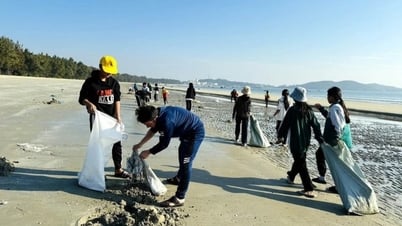Icebergs drift in Baffin Bay near Pituffik, Greenland, July 20, 2022. (Photo: AFP/VNA)
Australian scientists warn that ancient pathogens released into the environment by melting ice could cause major damage.
In a research report published on July 28, scientists at Flinders University simulated the hypotheses on computers and found that releasing just 1% of ancient pathogens could cause widespread damage to host organisms around the world .
This is one of the first studies to attempt to predict the potential damage caused by ancient pathogens being released from melting glaciers and permafrost due to climate change.
To make precise calculations, the researchers conducted simulation experiments in which pathogens from the past entered host communities.
The results were then compared with communities not threatened by the disease.
They found that 3% of pathogens could thrive in their new environment, and 1% could have disastrous consequences, including wiping out 30% of host species.
“We found that invasive pathogens can often survive, thrive, and in some cases become particularly persistent and dominant in communities, causing significant losses or changes in the number of living species,” said lead author Giovanni Strona, a scientist at the University of California, Berkeley.
Our findings therefore suggest that these unforeseeable threats – so far confined to science fiction – could in fact pose a serious risk as major causes of ecological damage."
"As a society, we need to understand the potential risks posed by ancient microbes, so that we can prepare for any unintended consequences should they re-emerge in the contemporary world," said Corey Bradshaw, a member of the research team.
Source link









































































































Comment (0)